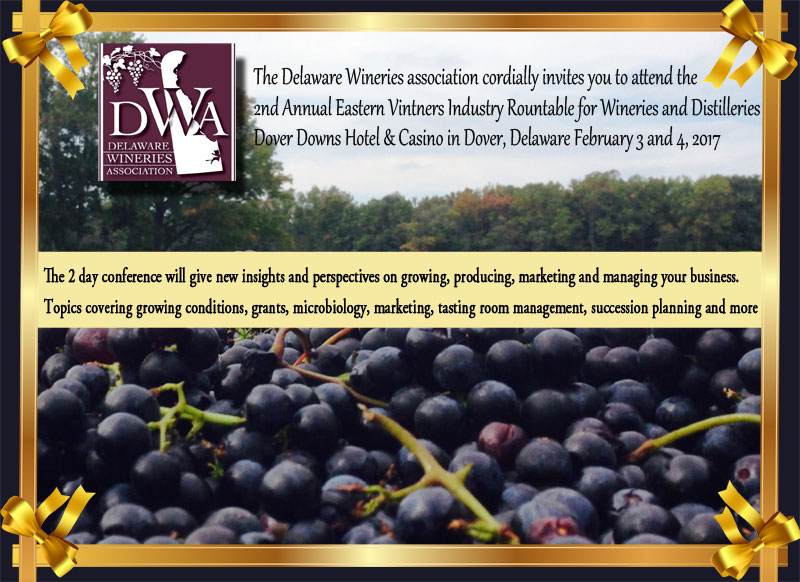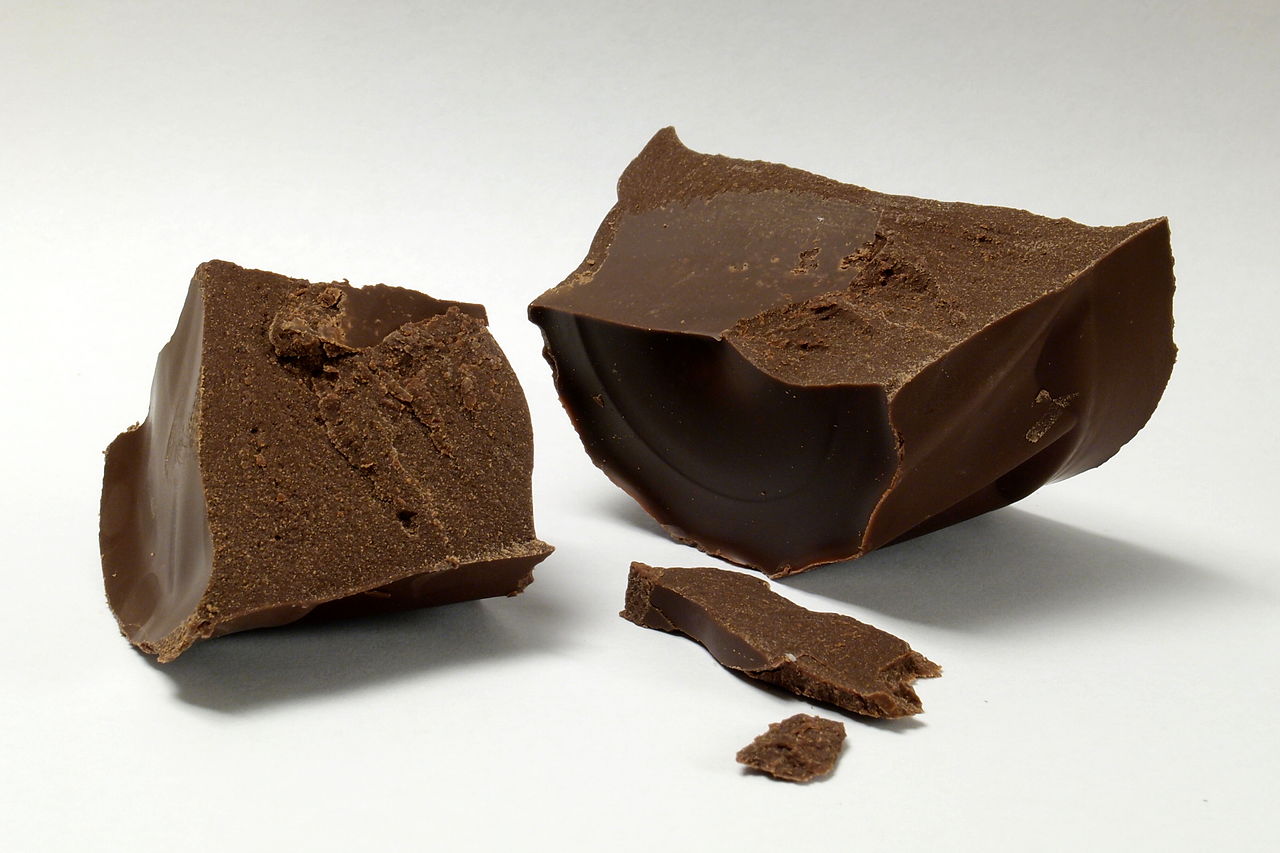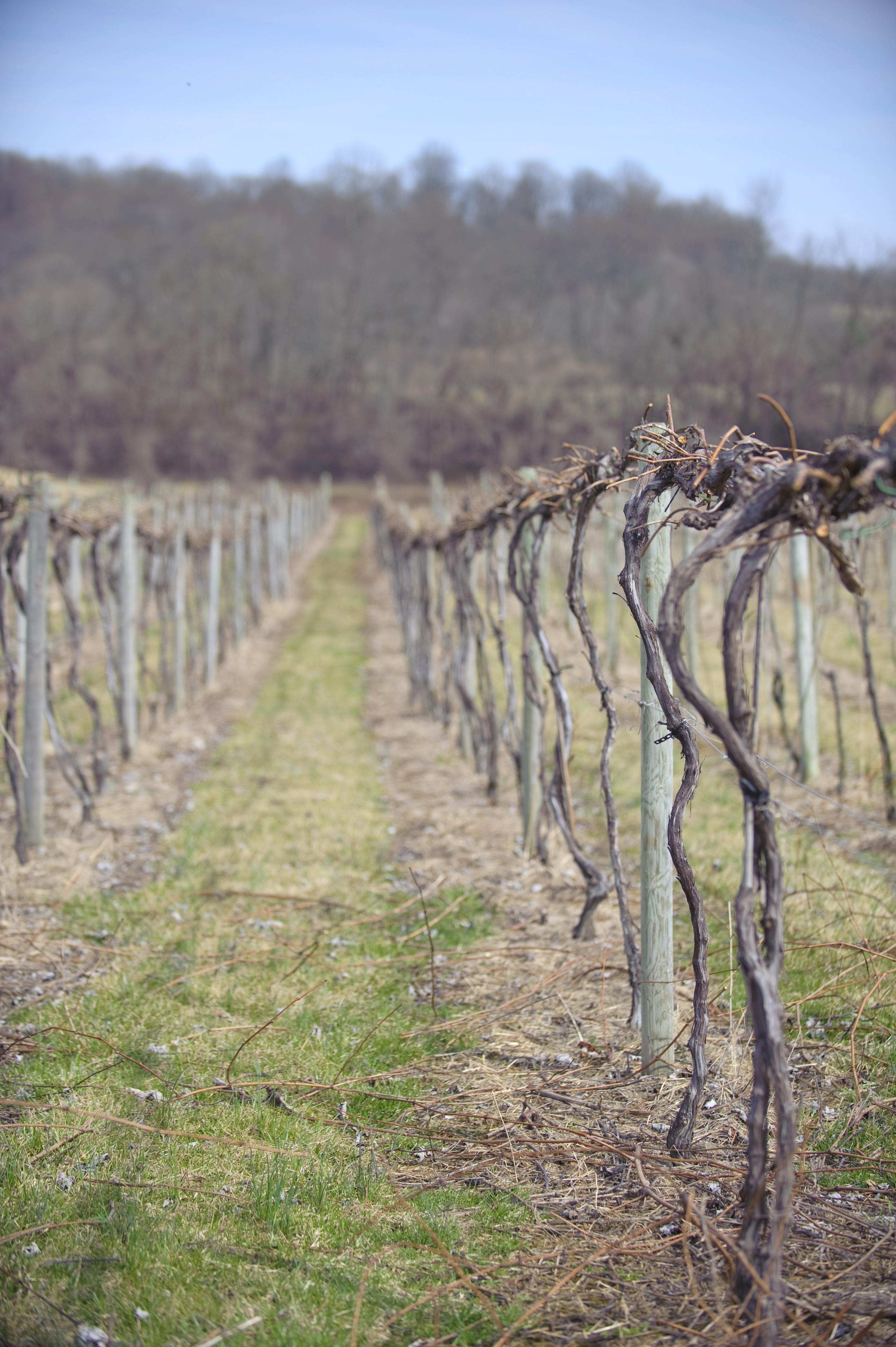Current News 1
Annual Conference
2nd Annual Eastern Vintner’s Industry Rountable
Join winemakers and distillers at the 2nd Annual Eastern Vintner’s Industry Roundtable Friday, February 3 and Saturday, February 4, 2017, in Dover, Delaware.
You’ll gain new insights and perspectives on growing, producing, marketing and managing your business. Topics covering growing conditions, grants, microbiology, marketing, tasting room management, succession planning and more will appeal to everyone at your business, from owners–to vineyard managers–to marketers–to tasting room staff!
Sessions will have a speaker/facilitator with roundtable discussions so that you can get your questions answered and allow you to provide your input and expertise to your fellow industry professionals.
The cost to attend is only $100 per person which includes all the sessions, dinner on Friday, and breakfast and lunch on Saturday.
The Delaware Wineries Association has reserved a block of rooms
at the Dover Downs & Casino at a discounted rate of $169 per night. Just use our special code GWIN17 to secure your room at this discounted rate.
Get tickets here; https://www.eventbrite.com/e/eastern-vintners-industry-roundtable-tickets-28728657187
How self-driving cars could be a game-changer for wineries and distilleries
With cars beginning to drive themselves, drinking and driving could become less of a problem than it is now, assuming technology evolves to the point where humans can imbibe without endangering anyone else on the road.
See the full article at the Huffington Post
Happy National Chocolate Day
We love chocolate any day, any time. Today is National Chocolate Day and that has us thinking about pairing Delaware wines with chocolate!
Fenwick Wine Cellars in Selbyville recommends their High Tide or Merlot for a delicious simple chocolate pairing.
In Marydel, Harvest Ridge Winery recommends the following based on what type of chocolate you’re enjoying:
-for milk chocolate or light chocolate desserts (think mousse), try their Merlot or sweeter sparkling wines like their Sparkling Vidal Blanc
-dark chocolate demands something hearty like Harvest Ridge’s soon to be released Chamfort, a port-style wine (oops! Did we just get a tip on a hot new offering? Yes!)
If you’re going “classic”, you can’t go wrong with chocolate dipped strawberries and Harvest Ridge Winery’s Sparkling Vidal Blanc.
There you have it! Perfectly delicious chocolate pairings, great for National Chocolate Day or any time you’re feeling a need for a little treat!
#NationalChocolateDay
Photo credit: https://commons.wikimedia.org/wiki/User:SKopp
Celebrate Harvest Time at our Brunch!
Country ham. Fresh roasted turkey. Made to order omelets. Bacon. Sausage. Texas French toast. Is your mouth watering yet?
We will have all this food and more at our Second Annual Harvest Brunch on Sunday, October 18. In addition to savoring the delicious food provided by our local caterer, The Inn at Duck Creek, you’ll have the chance to sip wines from Harvest Ridge Winery and Fenwick Wine Cellars, spirits from Painted Stave Distilling, cider from Rebel Seed Cider and mead from Liquid Alchemy Beverages.
This will be a great start to your day. Don’t miss out on attending! Seating is limited, so reserve your tickets today: http://bit.ly/dwabrunch
Snowy Weather & Grapevines
 Winter may be coming to a close but the East Coast has been hit with some challenges of ice and late-winter snows. Have you ever wondered if harsh winter weather on the East Coast harms grapevines? We asked our members to provide some insight on winter weather, grapevines and details on any protective measures they take for their vineyard.
Winter may be coming to a close but the East Coast has been hit with some challenges of ice and late-winter snows. Have you ever wondered if harsh winter weather on the East Coast harms grapevines? We asked our members to provide some insight on winter weather, grapevines and details on any protective measures they take for their vineyard.
Adrian Mobilia of Fenwick Wine Cellars in Selbyville, Delaware gave us his opinion: “Grape vines, like most other perennials, adapt to the environment, so when a particular environment has extreme weather, the vines are at risk. Most vines are able to tolerate some extreme weather, as long as they are healthy, for short periods of time. Winter injury can occur if lots of moisture were present directly before a quick and deep freeze. Given the time of year, the vines are dormant, and we would not expect much winter injury, if any thus far.
If vines are grafted, “hilling up” is a practice used to protect the graft union from the elements. This is a practice where the grower uses a machine to move the topsoil on, and around the vine, to protect it from the cold weather. ”
Jason Hopwood, Vineyard Manager at Harvest Ridge Winery in Marydel, Delaware, “There are several factors that may influence a grapevine’s capacity to tolerate weather extremes. Most vinifera cultivars are able to withstand temperatures down to -5F for short periods, while hybrid varieties tend to be hardier, withstanding temperatures dipping to -10F, and some even tolerating -20F to -30F.
Besides cultivar selection; vine health status prior to winter dormancy, periderm formation on canes/cordons, and whether vines are own-rooted or grown on alternative rootstock, are all factors that may affect the capability of a vine to maintain productivity after experiencing weather extremes.
Additionally, growers have options through the use of cultural practices, both prior to the onset of winter, as well as prior to bud break in the spring to help prevent a potential decline in output. Hilling up is a practice often used in cool climate areas, such as the Northeast after harvest has been completed. This practice entails mounding soil around the trunk just above the graft union, which acts as an insulator against harsh winter temperatures. The task is typically performed with the help of a specialized disc or plow implement mounted onto a tractor. This practice is less common in the Mid-Atlantic, as minimum winter temperatures are typically within grapevine tolerances, and the practice entails additional labor costs.
One cultural practice that may have more broad utilization in our region is the maintenance of grapevine bud wood or canes during dormant pruning. Buds may also be damaged due to extreme cold, potentially effecting vine productivity and yield. It may be sound to leave additional canes or buds on the vine above and beyond the normal number typically left as to ensure that any potential damage might be negated. Canes with the highest bud fertility may then be maintained, while canes exhibiting less than optimal growth are removed. As with any agricultural product, human intervention may often only have limited effect in balancing the impact of climatic conditions, but at least growers have some viable options in attempts to maximize grapevine health and productivity.”
So there you have it! With proper selection and maintenance, grapevines can be maintained throughout winter months with little to no harm. Grape yields can be maintained and we can be assured of enough grapes to continue making (and drinking) Delaware wines!
Welcome to the Delaware Wineries Association

Welcome to the inaugural website of the Delaware Wineries Association! It is our hope that you are informed about events and happening of our members. Learn more about the wines and distilled spirits that Delaware can produce!
Our membership spans the small state of Delaware, making it easy to travel from one member to another, tasting the best that Delaware has to offer. We currently boast two regularly open wineries and one distillery. Come visit and taste the flavors of “The First State”!
Sign Up for Our Free Newsletter
Visit our DWA members
Footer Sidebar 3
Drop a widget on "Footer Sidebar 3" sidebar at Appearance > Widgets page.




